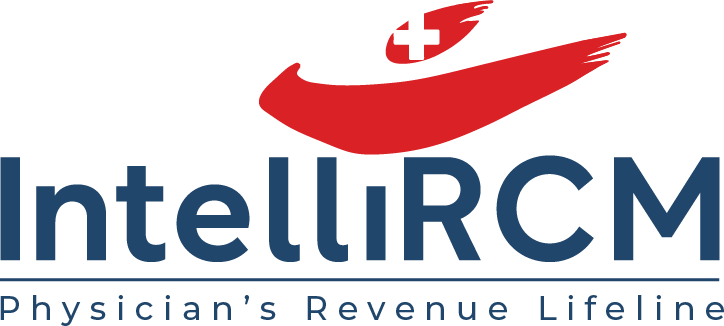
By intellircm 28th Sep 2022 Blog
More than 10,000 baby boomers turn 65 years old each day. By 2031, the last of the boomers will hit retirement age. That means that, as the largest generation becomes our oldest population, we will start to see an influx of patients requiring care.
Providing exceptional medical care will require a collaborative effort by everyone in the healthcare industry, especially medical billing and coding. Let's discuss the importance of this field in medical care.
The Importance of Medical Billing and Coding
Medical billing and coding are the foundation of the healthcare revenue cycle. These services ensure that patients and payers reimburse healthcare providers for services rendered.
Medical coding involves reading the clinical notes, and understanding SOAP, with coding knowledge pulling out billable information (i.e., CPT, ICD Codes) from a medical record as part of healthcare claims processing. Medical billing uses the codes from medical coding to create insurance claims and patient bills.
The process begins when a front desk/receptionist registers a patient and ends when the provider receives full payment for the care given. The complexity of the claim will determine the time necessary for processing these statements.
The whole process takes days to weeks, even months, not including the time it will take to manage the denied claims and move them along the payment cycle.
These complexities can make it difficult to ensure that full reimbursements and payments get processed. Healthcare management services, like medical billing and coding, will streamline your revenue cycle management and make processing claims more manageable for the accounting department.
What is Medical Coding?
The medical coding process starts when the patient enters the doctor's office. Providers log details of the visit in a medical record (SOAP) showing why they offered specific services and any procedures performed.
After the patient leaves, the professional medical coder will review and analyze the clinical documentation and attach the associated codes.
Documenting the care given helps justify reimbursements to payers in case a claim conflict arises. Inaccurate documentation can result in a denied claim that will require write-offs.
In some cases, inaccurate documentation could result in a fraud or liability investigation. That's why medical staff carefully record all care given, procedures performed, and equipment and supplies used.
Types of Medical Coding Codes
- ICD-10 Diagnosis Codes: These codes describe the patient’s condition. Industry standards mandate the use of the International Statistical Classification of Diseases and Related Health Problems, Tenth Revision (ICD-10), to capture diagnostic codes for billing. There are two components to this code: the ICD-10-CM for diagnostic coding and the ICD-10-PCS for inpatient procedures offered at the hospital. The ICD-10-CM alone contains at least 70,000 unique identifiers. The World Health Organization (WHO) maintains the ICD-10, and in 2015, the Centers for Medicare and Medicaid Services (CMS) migrated to the ICD-10 system.
- CPT & HCPCS Procedure Codes: These codes work with the diagnosis codes by explaining what the providers did during their encounters with the patient. Medical coders know that there are modifiers to CPT codes that help describe the services rendered in greater detail. The correct use of modifiers helps ensure the facility gets reimbursement for the procedure. Third-party payers and the CMS require healthcare workers to submit claims using HCPCS codes.
- Charge Capture Codes: These codes link patient care services, physician order entries, and other medical items related to care that use a chargemaster code - a list of prices for each service rendered. Revenue Cycle Managers (RCMs) use these prices to settle claim reimbursement rates with whichever party is responsible for paying and charging the remaining balance to the patients.
- Professional and Facility Codes: When necessary (and applicable), medical coders translate a medical record into professional and facility codes. Professional codes contain services offered by physicians (and other clinicians), linking the services with the billing code. Hospitals use these codes to understand the cost and overhead of providing healthcare services. They capture the charges for using the equipment, space, drugs, and other technical aspects of care.
What is Medical Billing?
Medical billing involves front-end and back-end billing services. When coders are translating medical records, the front-end billing process has already begun. Let’s review each of these services:
Frontend Medical Billing
The process begins when billers ask the patient to fill out the required forms while confirming that the personal and insurance information is correct. Billers and other staff may collect copayments to ensure a timely collection of patient financial responsibility during check-in or check-out.
Frontend medical billing confirms the patient's financial responsibility and checks to ensure their health plan covers the requested services. It also connects patients with payment options for line items not covered.
Backend Medical Billing
In backend medical billing, medical coders and billers complete what is known as a “superbill" - an itemized form used by providers to create and process claims. The superbill contains the following:
- Provider Information: This includes the provider's name, location, and signature. It also contains the names and National Provider Identifiers (NPI) of the ordering, referring, and attending physicians.
- Patient Information: This includes the patient's name, date of birth, insurance information, when symptoms were first observed, and other patient data.
- Visit Information: This includes the date of the service, procedure codes, diagnosis codes, code modifiers, times, units, and quantity of products used.
- Notes: These are any comments justifying the provided care and other patient care data the medical billers and coders need.
Once this process is complete, the medical billers will then submit claims directly to the payer. They may alternatively use a third-party organization such as a clearinghouse.
What Happens When a Claim Reaches the Payer?
After a claim reaches the payer, adjudication begins. The payer looks at the claim to determine how much to pay the provider. After the review, claims will either get accepted, denied, or rejected.
The payers then send electronic remittance advice (ERA) or explanation of benefits (EOB) to the provider organization outlining what services were paid, rejected, and denied. Medical billers will post the payment, denial, or rejections and then prepare statements for the patients after claims get paid correctly.
If there is a difference between what the payer agreed to pay and the total cost of service, the facility charges the patient.
Lastly, once all parties make the payments and reimbursements, the funds collected get submitted to accounts receivable. In the accounts receivable, patients can be categorized based on how quickly they pay their bills.
Let Us Help You with Healthcare Billing and Coding
Ready to streamline your accounts receivables with medical billing and coding services? At IntelliRCM, we can help with your facility’s revenue and cash flow management.
Give us a call today to speak to one of our friendly professionals. You can also reach us via email or visit our Contacts page.





